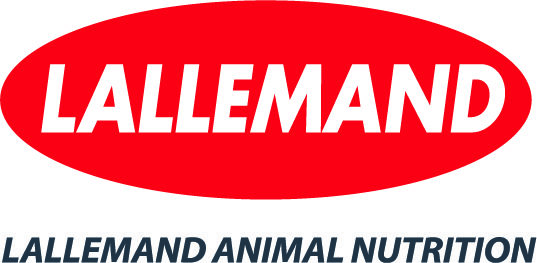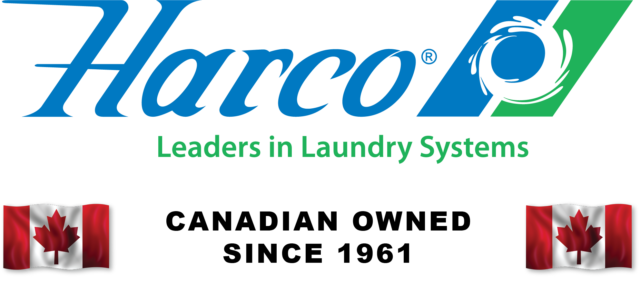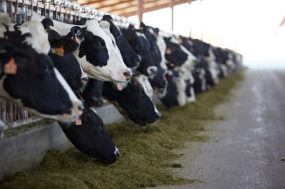In 2018, British Columbia coffee shops noticed that the milk used to make their lattes was not foaming. The culprit? Elevated levels of free fatty acids in milk.
Free fatty acids are products of milkfat breakdown. Bovine milkfat is composed of numerous milkfat globules, each with fatty acid molecules contained inside a protective milkfat globule membrane. If there is physical or enzymatic stress on the milk, the membrane can break and fatty acids are released, making them “free.”
All milk contains free fatty acids but in very small amounts (less than 0.1% of milkfat). Previous research out of Europe suggests that free fatty acid concentrations above 1.20 millimoles (mmol) per 100 grams of fat are considered elevated and concerning to milk quality. Not only do high levels prevent milk foamability, but they can also inhibit cheese coagulation, increase milk rancidity and reduce dairy products’ shelf life.
In August 2018, Dairy Farmers of Ontario (DFO) started testing bulk tank free fatty acid levels on all licensed dairy farms at every pick-up. The industry free fatty acids average (from 2018-22) was 0.83 mmol per 100 grams of fat. Test results showed that some farms had very low free fatty acid levels while others had consistently elevated free fatty acid levels (about 7% of farms).
This prompted a research investigation out of the University of Guelph, funded by DFO and led by myself and former DFO research chair David Kelton. Ontario and British Columbia farms were visited as part of the research with the aim of identifying the farm factors associated with increased levels of free fatty acids in bulk tank milk. The following research findings can help raise awareness of elevated free fatty acid risk factors.
Individual cow factors
Low milk protein is a substantial risk factor for elevated free fatty acids. Our research found that a 0.1% decrease in milk protein increased the odds of an elevated free fatty acids test result by 50%. This is likely because protein is an important part of the protective milkfat globule membrane.
Research from Europe suggests that high somatic cell count (SCC), late-lactation and low-yielding cows are at risk of producing milk with high free fatty acids. These cows have higher levels of lipoprotein lipase, a naturally occurring enzyme that breaks down milkfat. The risk is even greater when these cows are milked more than twice a day.
For smaller herds, individual cow factors are important to consider, since one cow’s susceptible milk represents a greater proportion of the bulk tank than it would on a larger farm.
Milking frequency
By increasing the milking frequency, the milking interval is decreased, resulting in less time for milkfat globule synthesis. This can cause the milkfat globules to have a thin and fragile membrane that is susceptible to breaking. Our research found that tiestalls and automated milking systems milking three or more times a day (on average) were associated with a 0.27 – 1.17 mmol per 100 grams of fat increase in free fatty acids.
Precooling
Farms in our study that used a precooling mechanism (such as a plate cooler, tube cooler or chiller) were associated with a 0.16 mmol per 100 grams of fat decrease in free fatty acids. Precooling can help producers avoid turning on the bulk tank milk cooler too soon, which could risk milk freezing. Our research detected an associated 0.36 mmol per 100 grams of fat increase in free fatty acids when milk freezing occurred (indicated by a bulk tank time-temperature recorder “milk too cold” alarm). This finding emphasizes the importance of waiting until milk reaches the agitation paddles before the bulk tank cooler is turned on.
Not only does a precooling mechanism help reduce bulk tank cooling activity, but it can also decrease bulk tank agitation and temperature fluctuations, therefore keeping more milkfat intact and preventing free fatty acids.
Bacteria thrive in warm environments. Colder milk, thanks to a precooling mechanism, can help reduce the number of bacteria and their accompanying enzymes that break down milkfat. Our research reported that milk with a single unit increase in bactoscan (1,000 bacteria per millilitre more) was three times more likely to have an elevated free fatty acid test result.
Milk filter change
To also reduce bacteria levels, the milk filter should be changed (not just rinsed) at least every milking. This means that producers with automated milking systems should be changing the filter at least three times per day. Our research detected a 0.27 mmol per 100 grams of fat increase in free fatty acids for farms that average milking three or more times a day but change the filter less than twice a day. A dirty filter not only fosters a suitable environment for bacteria to grow but also puts more stress on the milk trying to pass through.
Lactating ration
European research suggests that low-quality rations (low in protein or high in butyric acid) or insufficient dry matter intake (DMI) can also increase milk free fatty acids because of added cow stress and body fat mobilization. Another potential stressor includes sudden changes to the lactating ration. Excessive fat supplementation (ex: more than 300 grams per head per day) enlarges milkfat globules and could also increase free fatty acid levels. It is important for farmers to work with their nutritionists and provide their cows with a balanced and consistent ration that meets their energy needs.
Farm type
Ontario conventional herds have lower average free fatty acid levels than organic or grass-fed herds (Figure 1). This could be explained by:
- Feed changes occurring more often in organic and grass-fed herds to meet forage requirements
- Lower protein rations that decrease milk protein production
- Higher unsaturated fatty acid levels, which decrease milkfat stability
- Wetter feed with higher butyric acid levels
Organic and grass-fed producers are encouraged to work closely with their nutritionists.

Seasonality
Free fatty acids are not consistent. Lower levels tend to occur in the spring months while higher levels occur in the fall months. This could be due to a few reasons:
- Feed changes around harvest time
- Fall incentive days (for conventional herds, months with three incentive days were associated with 1.6 times the odds of elevated free fatty acids compared to months with no incentive days in our research)
- Adding or increasing palm fat supplements (more than 300 grams per head per day)
- Keeping later-lactation cows (greater than 300 days in milk) in the herd
Producers are encouraged to monitor their test results and assess their farm’s free fatty acid risk factors. A discussion with their nutritionist, veterinarian and/ or field service representative can also be helpful to target any free fatty acid concerns. Free fatty acid levels are another milk quality tool that can be used to continue raising the bar for high-quality Canadian dairy products.








